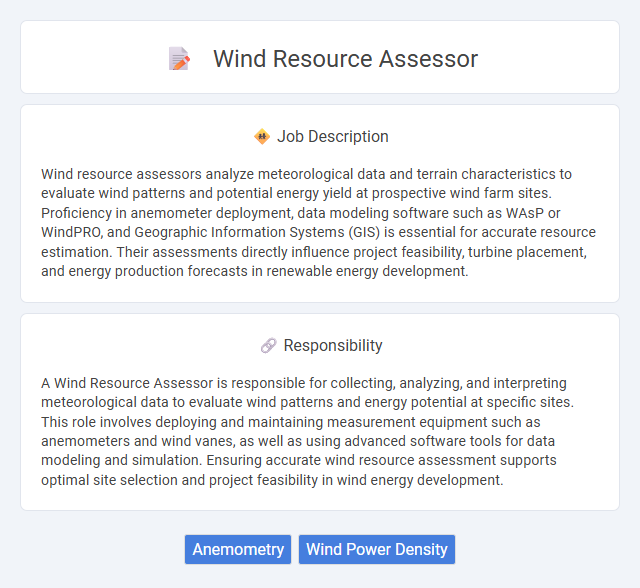
Wind resource assessors analyze meteorological data and terrain characteristics to evaluate wind patterns and potential energy yield at prospective wind farm sites. Proficiency in anemometer deployment, data modeling software such as WAsP or WindPRO, and Geographic Information Systems (GIS) is essential for accurate resource estimation. Their assessments directly influence project feasibility, turbine placement, and energy production forecasts in renewable energy development.
Ideal candidates for a wind resource assessor role are likely to possess strong analytical skills and a keen attention to detail, as the job involves evaluating complex environmental data. Individuals who enjoy working outdoors in varied weather conditions and have a background in meteorology or environmental science might be more suited for this position. Those who prefer stable office environments or lack an interest in renewable energy may find this role less compatible with their preferences and abilities.
Qualification
A Wind Resource Assessor requires a strong background in meteorology, environmental science, or engineering, with proficiency in data analysis tools such as GIS and wind modeling software like WAsP or WindPro. Candidates must have experience in collecting, processing, and interpreting wind resource data to evaluate potential sites for wind energy projects. Advanced knowledge of atmospheric physics, statistics, and remote sensing technologies enhances accuracy in assessing wind patterns and ensuring optimal turbine placement.
Responsibility
A Wind Resource Assessor is responsible for collecting, analyzing, and interpreting meteorological data to evaluate wind patterns and energy potential at specific sites. This role involves deploying and maintaining measurement equipment such as anemometers and wind vanes, as well as using advanced software tools for data modeling and simulation. Ensuring accurate wind resource assessment supports optimal site selection and project feasibility in wind energy development.
Benefit
A wind resource assessor is likely to gain valuable experience in renewable energy analysis, enhancing their expertise in sustainable practices. The position may offer opportunities for career growth within the expanding clean energy sector, increasing long-term job stability. Exposure to advanced meteorological technologies and data interpretation techniques could improve analytical skills beneficial for various environmental consulting roles.
Challenge
Wind resource assessors likely face challenges in accurately predicting wind patterns due to the variability of weather conditions and terrain complexities. They probably need to integrate advanced meteorological data and modeling techniques to minimize uncertainty in energy yield estimates. This role may require constant adaptation to emerging technologies and regulatory changes to ensure reliable assessments.
Career Advancement
A Wind Resource Assessor plays a critical role in evaluating wind energy potential by analyzing meteorological data and site conditions, which directly impacts project feasibility and efficiency. Career advancement typically involves progressing from junior analyst roles to senior positions such as Lead Assessor, Project Manager, or Renewable Energy Consultant, often requiring expertise in Geographic Information Systems (GIS), data modeling, and environmental regulations. Strong analytical skills, proficiency in software like WindPRO or Meteodyn WT, and experience with remote sensing technologies enhance opportunities for leadership roles and specialized consultancy in the renewable energy sector.
Key Terms
Anemometry
A Wind Resource Assessor specializing in Anemometry plays a critical role in evaluating wind patterns and speeds to determine the viability of potential wind energy sites. They utilize advanced anemometers, including cup, sonic, and ultrasonic types, to collect accurate wind data over extended periods, ensuring precise measurement of wind velocity and turbulence intensity. Expertise in data analysis and meteorological modeling allows these professionals to provide reliable assessments crucial for optimizing wind turbine placement and maximizing energy production.
Wind Power Density
Wind resource assessors analyze Wind Power Density to determine the potential energy generation at specific locations for wind farms. They collect and interpret meteorological data, using advanced tools and models to estimate the cubic meters per second rate of wind energy available per square meter. Accurate assessment of Wind Power Density enables optimal turbine placement and improves the efficiency and profitability of wind energy projects.
 kuljobs.com
kuljobs.com